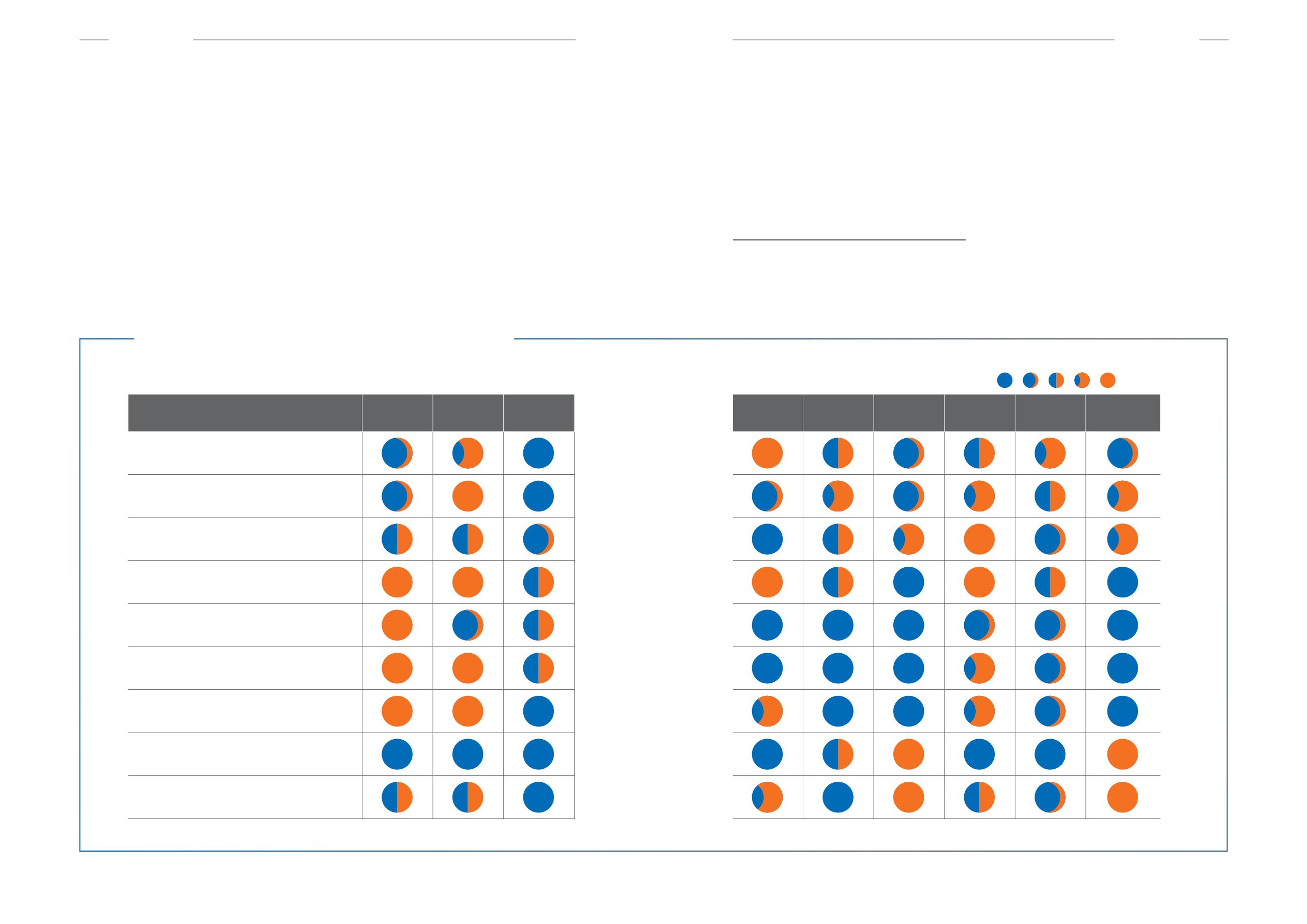

No single form of power generation is optimal in
all situations. Wind and solar are intermittent but
consume no fuel and emit no greenhouse gases.
Natural gas-fueled generation emits greenhouse
gases but it is dispatchable (i.e., has output that
can be readily controlled between maximum
rated capacity or decreased to zero) to help
balance supply and demand. It also has a relatively
low CAPEX ($/kW). Hydro power often requires
dedicating significant amounts of land area but is
renewable and dispatchable.
The Electric Power Research Institute created
the chart below to compare the advantages and
challenges of various forms of power generation
technologies. Although there may be specific
Assessment of relative benefit/impact
Coal
Coal w/CCS* Natural Gas Nuclear
Hydro
Wind Biomasss Geothermal
Solar
Photovoltaic
Construction cost
New plant construction cost for an
equivalent amount of generating capacity
Electricity cost
Projected cost to produce electricity
from a new plant over its lifetime
Land use
Area required to support fuel supply
and electricity generation
Water requirements
Amount of water required to generate
equivalent amount of electricity
CO
2
emissions
Relative amount of CO
2
emissions
per unit of electricity
Other air emissions
Relative amount of air emissions other
than CO
2
per unit of electricity
Waste products
Presence of other significant waste products
Availability
Ability to generate electricity when needed
Flexibility
Ability to quickly respond to changes in demand
Choosing Electricity Generation Technologies
Challenge
Advantage
*CCS: Carbon Capture and Storage
Assessment of relative benefit/impact
Coal
Coal w/CCS* Natural G s Nuclear
Hydro
Wind Biomasss Geothermal
Solar
Photovoltaic
Construction cost
New plant construction cost for an
equivalent amount of generating capacity
Electricity cost
Projected cost to produce electricity
from a new plant over its lifetime
Land use
Area required to support fuel supply
and electricity generation
Water requirements
Amount of water required to generate
equivalent amount of electricity
CO
2
emissions
Relative amount of CO
2
emissions
per unit of electricity
Other air emissions
Relative amount of air emissions other
than CO
2
per unit of electricity
Waste products
Presence of other significant waste products
Availability
Ability to generate electricity when needed
Flexibility
Ability to quickly respond to changes in demand
Choosing Electricity Gene at on T chnol gies
Challenge
Advantage
*CCS: Carbon Capture and Storage
Hybrid solutions:
defined
ELECTRICITY GENERATION
t chno l og i s
instances of power plants which do not align with
the relative ratings below, it is a good representation
of industry trends. The full comparison and
underlying basis for the ratings can be found at:
http://sites.epri.com/refcard/comparison.htmlHybrid power plants usually combine multiple
sources of power generation and/or energy storage,
and a control system to accentuate the positive
aspects and overcome the shortcomings of a
specific generation type, in order to provide power
that is more affordable, reliable and sustainable.
Each application is unique, and the hybrid solution
that works best for a specific situation will depend
on numerous factors including: existing generation
assets, transmission and distribution infrastructure,
market structure, and fuel prices and availability.
Each form of power generation has its pros and cons.
Source: Electric Power Research Institute (EPRI). Any statements, conclusions, summaries or other commentaries expressed herein do not reflect the
opinions or endorsement of EPRI.
8 /
HYBRID SOLUTIONS
/
www.gepower.com/hybrid www.gepower.com/hybrid/
HYBRID SOLUTIONS
/ 9
t rends
t rends


















